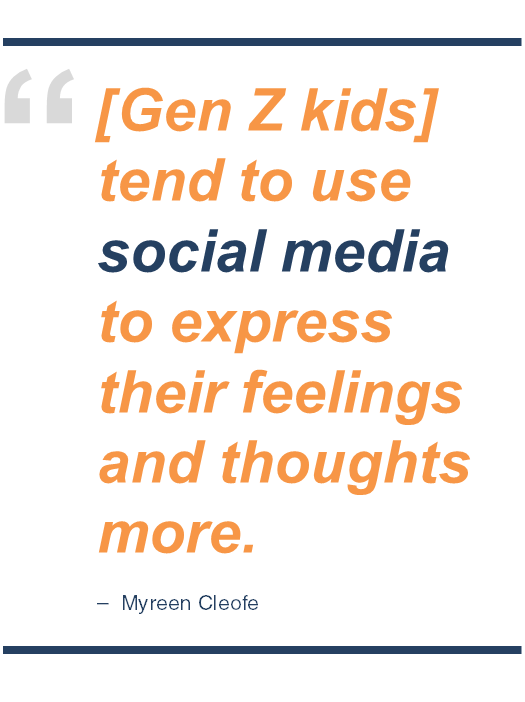Generation Z Unboxed
Generation Z is today’s students. For teachers, the challenge lies in connecting with them, so that they can effectively prepare them for the world. To do this, they have to make the learning experience constantly engaging to a group of individuals whose attention is constantly being lured by something that they find more interesting: the Internet.

Gen Z kids are born in the age of smartphones, the Internet (or the Cloud), and more recently, social media. They possess at their disposal the power of digital and cloud computing, which opens up a bigger world to them.
"Cell phones and social media are huge parts of their everyday lives," says Myreen Cleofe, a registered psychologist, teacher, and guidance counselor who serves students and groups with special needs at the University of Santo Tomas. "Because of this, they tend to use social media to express their feelings and thoughts more; although this can affect their social skills."
In addition, the availability of mobile Internet has literally placed information at their fingertips, sating Gen Z’s immense curiosity, driving them to explore beyond their immediate environment, and opening their minds. The world to them has shrunk, and everything is within their reach.
The Gen Z’s unique character calls for the creation of teaching and learning opportunities that match. It is also a consideration that since a breadth of information is available to them in the Internet, the teacher ceases to become their only source of knowledge. What then, should a teacher do to remain relevant in this generation’s learning experience? Here are some tips:



Their gadgets are within reach, if not on the palm of their hands (or their wrists in the case of smart watches) all the time. It makes sense then, to engage these students through these digital technologies. Hence, the hybrid learning and flip classroom approaches are becoming popular since they combine technology-based digital instruction with face-to-face lesson delivery. Using digital technology extends learning beyond the constraints of space and time. For example, teachers can use applications like FaceTime and Skype to set up video conferences that will allow students to learn directly from doctors, engineers, and other professionals living in different time zones. There are also Learning Management Systems (LMS) such as Genyo e-Learning that makes available lesson packages that teachers can use to implement flip classroom. It’s also a perfect tool that encourages students to learn at their own pace, anytime, anywhere

One way to provide variety is to introduce learning by creating. Let your students produce a short film, write a poem, create a toy truck, or bake a cake while learning about concepts in Science, Math, English, or History. Instead of just using their ears to stimulate their minds, use their hands and feet as well.
3. Build their confidence. Many Gen Zs would rather spend their time at home playing with their gadgets. As a result, they do not develop the confidence needed to take risks, and they struggle with criticisms. Atalig suggests that in order to prepare them to become problem-solvers in the future, educators should allow them to commit errors, and guide them towards learning from those mistakes. Educators can start by encouraging collaboration and human interaction through group discussions and brainstorming sessions. Make them talk to each other, play together, and solve problems in groups. By doing so, students get to build their confidence in face-to-face communication, and develop their ability to evaluate criticism and accept mistakes.

Bridging the gap
Educators must re-create the teaching and learning environment, so they can prepare Gen Z students for the future that hasn’t been imagined yet. To do this, they must allow students to learn on their own terms by becoming facilitators and curators of knowledge rather than the sole source of it; they must focus more on learning outcomes rather than grades; and they must spend less time minimizing risks and more time designing high-challenge tasks that encourage collaboration. By adapting the right teaching style, and maximizing available digital tools, educators can teach Gen Zs to become creative, life-long learners, and problem-solvers.
In addition, Cleofe advises that "parents must spend quality time with their kids, and teachers must communicate and guide their students.” Being there to talk to them about anything—from the people they prefer to hang out with, to their opinions on social issues—will help them become independent, and, hopefully, encourage them to create a better world.
RESOURCE PEOPLE
Registered psychologist guidance counselor and teacher
College counselor of students and groups with special with special needs
University of Santo Tomas
Kindergarten teacher, Child Study Center
Professor, College of Education
Miriam College

